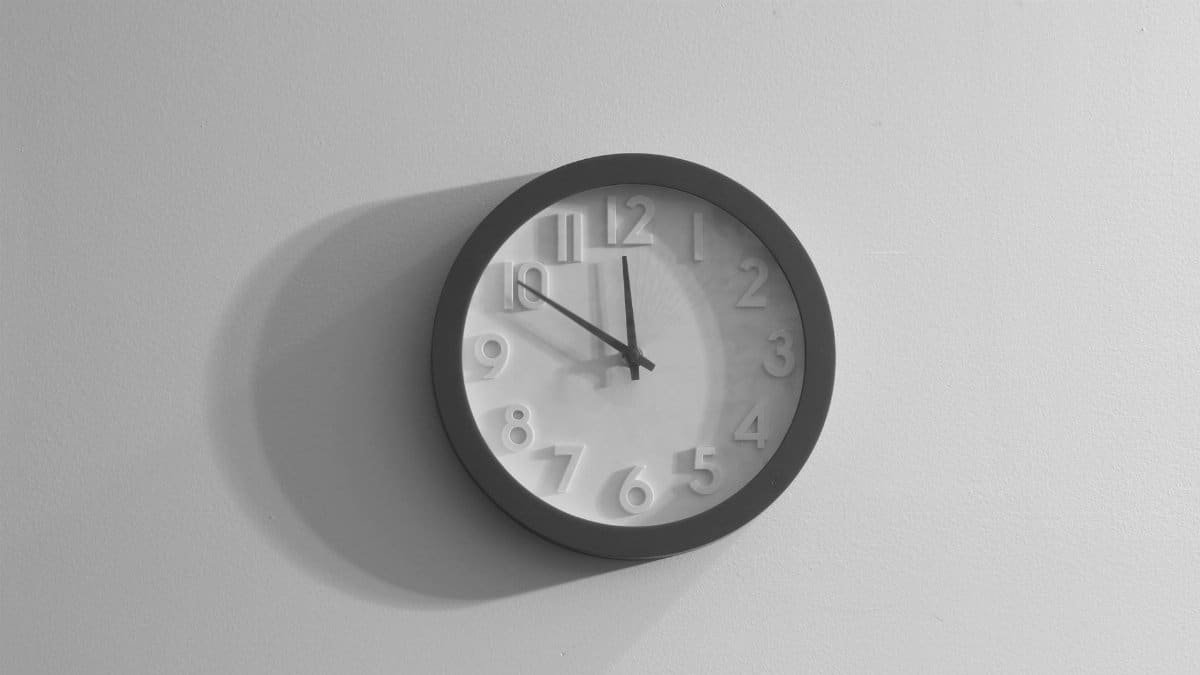Imagine a bustling diner in Chicago, where the morning rush is in full swing. Waiters weave through tables, coffee pours endlessly, and the air hums with conversation. Yet, amid the clatter, a small group of regulars quietly times their meals with precision, guided by an unseen rhythm. They’re not just eating for hunger; they’re syncing with their body clocks through circadian meal timing. This practice, aligning food intake with the body’s natural 24-hour cycles, is gaining traction across the U.S. It’s not about what you eat, but when. Research suggests this approach could optimize energy at a cellular level, specifically by fueling mitochondria—those tiny powerhouses in our cells. As more Americans grapple with fatigue and metabolic challenges in 2025, could this subtle shift in timing offer a new way to recharge? The science, and the stories, are worth a closer look.
The Science Behind Circadian Meal Timing

At its core, circadian meal timing taps into the body’s internal clock, a system governed by the suprachiasmatic nucleus in the brain. This tiny region responds to light and dark, orchestrating hormones like melatonin and cortisol to regulate sleep, energy, and even digestion. Eating in sync with these rhythms—say, a hearty breakfast soon after waking and lighter meals as the day wanes—can enhance how the body processes food. Studies show that mitochondria, the cellular engines responsible for energy production, function more efficiently when meals align with peak metabolic windows, often earlier in the day.
A 2019 study from the University of California, Irvine, found that mice fed during their active phases had improved mitochondrial activity and better glucose control compared to those fed at rest times.Cell Metabolism Journal published these findings, hinting at parallels for humans. The takeaway? Timing meals to match our natural alertness could supercharge cellular energy. It’s not just theory—researchers argue this could combat modern issues like insulin resistance, especially prevalent in the U.S.
Mitochondria: The Cellular Connection

Mitochondria don’t just power cells; they’re deeply tied to how we feel day to day. These microscopic structures convert nutrients into ATP, the body’s energy currency. But their efficiency isn’t static—it fluctuates with circadian rhythms. When we eat late at night, during the body’s rest phase, mitochondria struggle to process fuel effectively. The result? Sluggish energy, poor recovery, and even oxidative stress, which can age cells faster.
Research from the National Institutes of Health highlights that misaligned eating disrupts mitochondrial function, potentially contributing to metabolic disorders.NIH Diabetes Overview connects these dots, noting the broader implications for conditions like diabetes. Picture a factory running on the wrong shift—output suffers. Syncing meals with the body’s active hours, typically morning to early afternoon, might keep that factory humming. It’s a small tweak with outsized potential.
Why Timing Trumps Late-Night Snacking

Americans love their midnight snacks. Whether it’s a bowl of cereal after a late shift or pizza during a streaming binge, eating after dark is a cultural norm. Yet, this habit clashes with circadian principles. Digestion slows at night as the body prioritizes repair over fuel processing. A heavy meal at 10 p.m. can sit undigested, spiking blood sugar and straining mitochondria when they’re least equipped to handle it.
Consider a nurse in Atlanta, finishing a grueling 12-hour shift. She grabs fast food at midnight, craving comfort. Over time, though, she notices persistent fatigue, despite decent sleep. Her story echoes a broader trend—data from the Centers for Disease Control and Prevention suggests over 30% of U.S. adults eat significant calories after 8 p.m.CDC Nutrition Stats underline this pattern. Shifting even one meal earlier could recalibrate her system. It’s not about deprivation, but strategic timing.
Cultural Shifts and Modern Challenges

In 2025, the American lifestyle often defies natural rhythms. Work-from-home setups blur day and night. Social dinners stretch past sunset. Even fitness buffs, chugging protein shakes post-evening workouts, may unknowingly work against their biology. Circadian meal timing asks for a countercultural rethink—prioritizing breakfast and lunch over dinner, or at least scaling back after dusk. It’s a tough sell in a nation wired for late-night everything.
Yet, pockets of change are emerging. Wellness communities in cities like Austin and Portland are hosting “sunrise meal clubs,” where members gather for early, nutrient-dense breakfasts. One participant shared anonymously online that eating by 7 a.m. felt like “resetting a foggy brain.” These grassroots efforts signal a hunger for balance, even if mainstream adoption lags. The tension lies in convenience versus biology—can we rethink dinner as the day’s lightest meal?
Practical Steps to Align Your Plate with Your Clock

Starting circadian meal timing doesn’t require a complete overhaul. Begin with a simple rule: eat your largest meal within two hours of waking, when metabolism peaks. A protein-rich breakfast—think eggs, avocado, whole-grain toast—sets the tone. Lunch, substantial but lighter, should land before 2 p.m. Dinner? Keep it minimal, ideally before 7 p.m., focusing on easily digestible foods like vegetables or broth-based soups.
Adjusting takes patience. If late dinners are non-negotiable due to family or work, shrink portion sizes and avoid heavy carbs or fats. Hydration matters too—water supports the body’s natural detox during fasting hours overnight. A study summarized by Harvard Medical School reinforces that eating earlier bolsters metabolic health, even with imperfect schedules.Harvard Health offers accessible insights on aligning habits. Small shifts compound over weeks, not days.
The Broader Impact on Well-Being

Beyond mitochondria, circadian meal timing ripples into sleep, mood, and productivity. Eating late often delays melatonin release, the hormone signaling rest. Poor sleep then fuels stress, creating a vicious cycle. By contrast, earlier meals support a natural wind-down, prepping the body for deeper rest. Imagine a teacher in Seattle, juggling grading and parenting. After shifting meals earlier, she notices sharper focus by mid-afternoon—no more 3 p.m. slump.
This isn’t just anecdotal. Research links meal timing to mental clarity and emotional stability, as stable blood sugar prevents energy crashes. The interplay of diet and rhythm offers a holistic boost, especially in a fast-paced era. For middle-aged adults, often balancing career peaks with health concerns, this could be a quiet game-changer. It’s less about strict rules and more about reclaiming a natural flow.
Navigating Skepticism and Misconceptions

Not everyone’s sold on circadian meal timing. Critics argue it’s impractical for shift workers or social butterflies. Others question if the science, often based on animal studies, fully translates to humans. Fair points—lifestyle constraints are real, and research is evolving. But dismissing the concept overlooks mounting evidence of metabolic benefits, even with partial adherence. It’s not all-or-nothing; even one timed meal can nudge the needle.
Another hurdle is the myth that fasting or skipping meals is the goal. This isn’t about starvation—it’s about alignment. A common misstep is overcorrecting, like cramming all calories into a tiny morning window, which can backfire with hunger spikes. Balance matters. Education is key, as is flexibility. The goal is to adapt the principle to real life, not to chase perfection in a messy world.
A Path to Sustainable Energy

As fatigue remains a silent epidemic in 2025, circadian meal timing offers a grounded, science-backed strategy. It’s not a fad diet or quick fix. Instead, it’s a return to rhythms humans evolved with—eating when the sun is up, resting when it’s down. Mitochondria thrive under this cadence, and so might we. The stories of early adopters, from diner regulars to exhausted nurses, suggest a tangible difference in energy and clarity.
Challenges persist—cultural norms, work demands, and skepticism won’t vanish overnight. Yet, the potential to recharge at a cellular level is hard to ignore. Start small. Shift breakfast earlier by 30 minutes. Notice how the body responds. In a society racing against time, perhaps the answer isn’t more hours, but better alignment with the ones we have. The clock, after all, is already ticking.

A certified hypnotherapist, Reiki practitioner, sound healer, and MBCT trainer, Christopher guides our journey into the spiritual dimension, helping you tap into a deeper sense of peace and awareness.
Disclaimer
The content on this post is for informational purposes only. It is not intended as a substitute for professional health or financial advice. Always seek the guidance of a qualified professional with any questions you may have regarding your health or finances. All information is provided by FulfilledHumans.com (a brand of EgoEase LLC) and is not guaranteed to be complete, accurate, or reliable.
